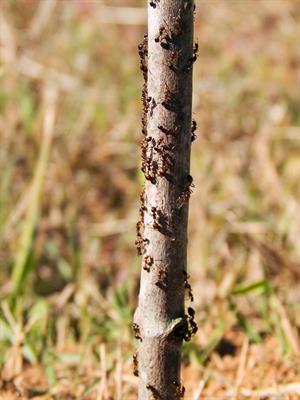
PUMPA - SMART LEARNING
எங்கள் ஆசிரியர்களுடன் 1-ஆன்-1 ஆலோசனை நேரத்தைப் பெறுங்கள். டாப்பர் ஆவதற்கு நாங்கள் பயிற்சி அளிப்போம்
Book Free DemoNAME the smallest insect you have seen, and the wisest. Is it the fly? No, it isn’t. Is it the mosquito? No, not the mosquito. Then it must be the worm. No, none of these. It is the ant—the commonest, the smallest but the wisest insect. The story of an ant’s life sounds almost untrue. But people have kept ants as pets, and have watched their daily behaviour closely. So we know a number of facts about this tiny, hard-working and intelligent creature.
An ant uses its feelers or antennae to ‘talk’ to other ants by passing messages through them. Watch a row of ants moving up or down the wall. Each ant greets all the others coming from the opposite direction by touching their feelers.
Explanation:

If someone asks us to name the smallest and the wisest insect - what will be the answers?
Fly? - No
Mosquito? - No
Worm? - No.
There is a smaller and wiser insect than all of these: the most commonly seen insect - ants. The story of an ant is unbelievable. Ants have been grown as pets, like how people grow dogs and cats. By having ants as pets, they were able to see the ant's daily behavioural activities. That is how we have come to know a lot about ants.
Ants use their antennae (feelers on their head) to communicate with other ants. When we see a row of ants passing up or down a wall, they greet the ants coming from the other side - by touching with their feelers.

Meanings of difficult words:
Words | Meanings |
| almost untrue | too good to be true, unbelievable |
| antennae | a pair of long, thin sensory attachments on the heads of insects |
Reference:
National Council of Educational Research and Training (2007). Supplementary. The Tiny Teacher(pp. 1-6). Published at the Publication Division by the Secretary, National Council of Educational Research and Training, Sri Aurobindo Marg, New Delhi.